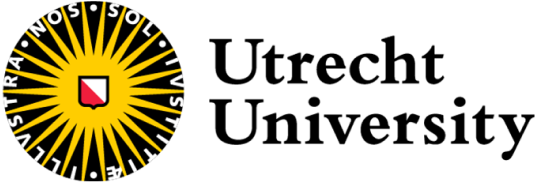About this course
Het doel van het vak Inleiding Topologie is dat de student vertrouwd raakt met de fundamentele begrippen van de topologie, met name open en gesloten verzamelingen, compactheid, samenhangendheid, compactificatie, metriseerbaarheid. Na afloop van de cursus moet de student met deze begrippen kunnen werken en ze kunnen toepassen in wiskundige situaties.
Het vak Inleiding Topologie is een verplicht vak voor wiskundestudenten.
Zie ook de website van het vak: https://webspace.science.uu.nl/~crain101/topology-2024/.
Leerdoelen:
The following topics will be discussed in the course.
- The intuitive notion of "space" (+ definition of metric spaces) and standard examples (spheres, Moebius band, torus, Klein bottle, projective space etc).
- The abstract definition of topological space; first examples; metric topology; metrizability; Hausdorffness, separation axioms and normal spaces; subspace topology.
- Neighborhoods; continuity; homeomorphisms; embeddings; converegence and sequential continuity; basis of neighborhoods and 1st countability.
- Inside a topological space: interior, closure, boundary.
- Quotient topology; special quotients (e.g. quotients modulo group actions; collapsing a subspace to a point; cylinders, cones, suspensions).
- Product topology, bases for topologies, generated topologies.
- Spaces of functions; pointwise, uniform, uniform on compacts convergence; completeness with respect to the sup metric.
- Connectedness, path connectedness, connected components.
- Compactness, basic properties, compactness in metric spaces (characterizations in terms of completeness and total boundedness), finite partitions of unity; sequential compactness.
- Local compactness; the one-point compactification.
- Paracompactness and arbitrary partitions of unity. Criteria for paracompactness.
- Urysohn's lemma, the Urysohn metrizability theorem, the Smirnov metrizability theorem.
After attending the course, the student knows/understands:
- the standard examples (spheres, tori, Moebius bands, projective spaces) and manipulations with them (gluing, etc),
- the basic notions of topology: the abstract notion of topological space, convergence, continuity, homeomorphisms, interior, closure,
- the standard constructions of topological spaces: metric topologies, induced topologies, quotient topologies, product topologies, generated topologies,
- the most important topological properties: Hausdorffness, connectedness, compactness, local compactness,
- the usefulness of compactness for proving embedding results; characterizations of compactness in metric spaces,
- several metrizability results,
The student is able to:
- manipulate with the basic concepts of topology; show the axioms for a topology; prove that a given function is continuous, or that a sequence is convergent; to compute in examples interiors, closures and boundaries; to write proper proofs using these concepts;
- manipulate with explicit examples, perform gluings or collapsing a subspaces (as an example of quotients);
- use the various topological properties in order to distinguish certain topological spaces (proving that they are not homeomorphic). Example: a circle is not homeomorphic to a bouquet of two circles because, after removing any point from a circle the result is connected, while the corresponding property is not true for the bouquet;
- manipulate with quotients and to compute quotients. Be able to show that a given map is an embedding (e.g., by using compactness);
- use compactness and sequential compactness;
- work with the one point compactifion;
- use paracompactness and partition of unity;
- use normality and Urysohns lemma on the existence of separating functions;
- understand Urysohn and Smirnov metrizability theorems.
Onderwijsvormen:
Each week there are two lecture and two exercise classes, each of two hours. There will be a number of exercises for instruction in class, and a number of homework exercises (mandatory).
Toetsing:
Passing the course will be subject to some minimal requirements, and the final marks will depend on several items:
-
Hand in exercises: there will be mandatory weekly homework exercises. The average of the marks for all the homeworks will give one mark HW (maximum 10).
-
Bonus exercises: there may be a couple of Bonus exercises, which are considerably harder exercise for which, if solved correctly, you can receive a number of points (typically 0.25-0.5 pts). Such points sum up to a number of bonus points, call it B.
-
Final exam: there will be a "final exam" that will give one mark E (maximum 10).
-
Final mark: min{10, B+ max{(7 E+ 3 HW)/10, (17E+ 3H)/20}}
-
Requirements for passing the course:
-
at least 5 for the average of the Homeworks,
-
at least 5 for the Final Exam
-
the usual requirement that the final mark is at least 6.
-
Please be aware that, for the requirements of "at least 5", there will be no automatic rounding up for marks below 5 (e.g. 4.95 will not be a passing mark). On the other hand, in principle, for marks above 5, the rounding will go to the closest integer or integer.5. For instance, 6.72 is rounded to 6.5, while 6.77 to 7. In some limit cases, the presence in the exercise classes will be decisive in how the rounding is done.
Herkansing en inspanningsverplichting:
The same rules apply for the retake.
Taal van het vak:
The language of instruction is English.
Learning outcomes
Zie onder vakinhoud.
Prior knowledge
WISB102 Proofs in mathematics, WISB114 Analysis and WISB124 Introduction to groups and rings (preferably, but the necessary theory can be learnt during the course). See the courseplanner (cursusplanner.uu.nl) for the contents of those courses: select Faculty of Science and then the programme of the bachelor Mathematics of the most recent year.
Resources
- Dictation There are revised lecture notes (dictaat), divided into two parts the theory, and exercises. They are available via A-Eskwadraat and can also be found on the website of the course: https://webspace.science.uu.nl/~crain101/topology-2024/
Additional information
- More infoCoursepage on website of Utrecht University
- Contact a coordinator
- CreditsECTS 7.5
- Levelbachelor
- Selection courseNo
Offering(s)
Start date
11 November 2024
- Ends31 January 2025
- Term *Period 2
- LocationUtrecht
- Instruction languageEnglish
Course is currently running
